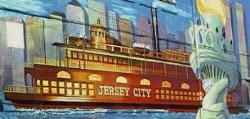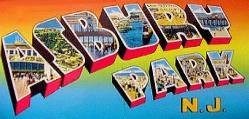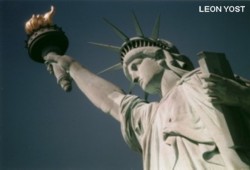 |  |  |
|
| ||
 |  |  |
 |  |  |
|
| ||
 |  |  |
|
|
By Harriet Phillips Eaton
Published 1899
This Web version, edited by GET NJ
COPYRIGHT 2002
The Aesthetic Society, a literary club of ladies and gentlemen, was founded by Mrs. Erminie A. Smith. In the records of Jersey City no name stands higher than that of Mrs. Smith, whose home was at 203 Pacific avenue. She was a woman of wonderful magnetic and personal influence, of rare culture, great ability and scientific attainments, a profound student along many lines, an expert in geology and mineralogy, an authority upon "Indianology." Her talents were widely recognized. In the interest of the Ethnological Bureau she made personal investigations into the history legends and folk-lore of the Iroquois Indians, and prepared a dictionary of the Tuscarora language. She was an honorary member of the British Archeological Society, a member of the American Archeological Society; the first woman elected a member of the New York Academy of Sciences; not only a member of the American Society for the Advancement of Science, but also Secretary of the Section of Anthropology. Withal she was a most womanly woman. Jersey City owes to this gifted woman a debt of gratitude, not alone for her influence in awakening a love for science and literature among the young people, but for forming the Aesthetic Society, and in bringing hither the most celebrated people of the day, both American and foreign visitors, to our shores. She developed an interest among Jersey City women in intellectual pursuits which has grown and deepened with the years. May her memory ever be held in loving remembrance. The Aesthetic Society was composed of women and men, many of whom were prominent in literary circles. The younger members of the society studied history and literature, and, aside from the lectures from celebrities, interesting essays were prepared by the members. At the death of Mrs. Smith, in 1886, the society ceased to exist. A short time after a few of Mrs. Smith's friends, principally ladies of Jersey City, raised a sum of money to create a prize and presented it to Vassar College, the interest of which is to be given in two prizes each year for the best work in geology and mineralogy. A fine portrait of Mrs. Smith was also presented to Vassar. This was considered a most fitting memorial to one who was always helpful to others.
ODD VOLUMES.
In the fall of 1887 Miss Cecelia Gaines proposed to a few friends the formation of a club for the study of Literature, and the Odd Volumes came into existence with a membership of eight which was soon increased to the limit of twenty-five. After a few years the limit was increased to thirty-five. The meetings are held at members houses. That it has become an ideal woman's club is proved by its long list of waiting candidates for admission, and the desire for invitations to its regular meetings and its special festivities. While the club has accomplished much good and serious work in its literary and historical studies, it has not lost sight of the social feature which has been such an important factor in its success ands popularity. Miss Gaines is the president. In that office the club will not allow any change, but with the other club officers rotation in office is the rule.
JERSEY CITY WOMAN'S CLUB.
In 1894 was formed the Jersey City Woman's Club,which has a membership of over two hundred and isunlimited. It is a department club, its several sectionsbeing Education, Woman's Exchange, Philanthropy,Town Improvement, Home, Literature, Music and Art. "Its object shall be to awaken interest in subjects which especially concern women; to stimulate inquiry in questions of public significance, and to promote effort toward social and educational advancement. Motto: 'In great things, unity; in small things, liberty; in all things, charity.'" Miss Gaines was the first president; she was succeeded by Mrs. Alice May Scudder. The meetings are held at Hasbrouck Institute, the first Thursday in each month.
The Ramblers is a young ladies' literary club, connected with Hasbrouck Institute. The Open Hand is a club in the northern part of the city, for the study of history and literature; although still young it has made most notable progress. The Ceramic club is a society of ladies who are enthusiastic students of china decorative art, and of the history of pottery and its associated literature. At their social meetings there is a fine display of artistic work of the members. Once a month they usually have a talk by a specialist upon some branch of their work. The women's clubs of Jersey City are all represented in the New Jersey State Federation of Women's Clubs, which was organized in 1864, in response to a call of the Woman's Club of Orange, at Orange, with Mrs. Yardley, of Orange, as its first president. In October, 1896, its convention was held at Jersey City in the Bergen Reformed Church; a very notable occasion. At that time Miss Cecelia Gaines was elected president. During the past summer she ably represented the state at the convention in Denver, Colorado.
BOAT CLUBS.
The Orion Rowing Association, the pioneer boat club of Jersey City, was organized in August, 1872, and judge J. H. Lippincott was its first president. The first club rooms were on the southwest corner of Newark and Baldwin avenues, those formerly occupied by the Hudson City Free Library. The first boat house was a fat factory on the meadows, a quarter of a mile from the Hackensack River, but the enthusiasm of the members was so great that they carried their four-oared barge to and from the river until they were able to secure better quarters. Through Mr. Levering's efforts Gill Ward, one of the famous Ward brothers, at one time champion oarsmen of the world, coached the Orions in the fall of 1872, and again for several weeks in the following year. In October, 1876, the Orions united with the Hudson Athletic Club, which had been organized by Messrs. H. and C. Hoe, C. Rooney, F. Hill and W. H. Kuran, and was henceforth known as the Orion Rowing and Athletic Association. They then made their headquarters in the Beach block, opposite the Court House, where they fitted up a fine gymnasium, with an instructor from New York. These gymnasium privileges were extended to a junior class.
For many years their receptions were social events and largely attended by prominent people. Exhibitions were held every spring and autumn for many years at the West Side Driving Park. The inaugural exhibition, on Decoration Day, 1877, was a red letter day in athletic circles. There was the largest list of athletic games on record up to that date, with entries from most of the prominent amateur athletes in all lines, from all over the United States. Stages were run from the ferries and the elevator to the West Side Driving Park. From that date the Orions gained and held a most desirable reputation for honor, fairness and excellence in athletics, and became a very popular club. Referees and judges, on field days, from the Orion members were selected by athletic clubs, not only in New Jersey, but in other states. There are treasured in the club annals a long list of names of athletes who won on numerous fields honor and medals. In this same year, 1877, the club built their boat-house on the Hackensack River, at the foot of St. Paul's avenue, twenty by one hundred and twenty-five feet. On the lower floor the association boats are kept, eleven in number-a barge, two four-oared gigs, two pair-oared gigs, three single gigs, and one four-oared shell. The second floor is used for lockers and dressing rooms, with tables and chairs. A two-storied veranda extends across the building, and the upper one makes a delightful lounging place for the club members. From the flagstaff floats the blue and orange flag of the Orions. The boat-house occupies an exceptionally fine location. It fronts upon deep water, with a straightaway course of a mile and a half, where a dozen boats could be sent off abreast. At no time are they prevented from rowing by rough waters or heavy winds. Every year the Orions hold a regatta, but no entries are allowed from other clubs. Competition and honors are strictly among themselves. There is a long list of efficient oarsmen whose names are honored in the club. Orions are famous for their jolly good times ; with all of their hard work, they have kept up the social side of club life, and are deservedly popular. The Hudson Boat Club, which was organized about the same time as the Orions, had its headquarters at Communipaw Cove, near the Sugar House, and was at one time a very popular club. The Jersey City Athletic Club has a boat-house, and rowing forms a part of the. athletic exercises.
GUN CLUBS.
In July, 1879, were organized two Gun Clubs in Jersey City -- the Jersey City Heights and the New Jersey -- both of which were in existence for several years and achieved some very fine records in pigeon and ball shooting. The Jersey City Heights Gun Club was organized July 11th, with the object of "the education and advancement of its members in the art of wing and trap shooting; also for the enforcement of the game laws of this state." The rules required that the butt of the gun should be clear below the elbow when the shooter called "pull." The club rooms for many years were at the northwest corner of Oakland and Newark avenues, and their grounds were at Marion, where there were held many interesting shooting matches among themselves, and with other clubs. Under their auspices were held exhibitions by such celebrated shooters as Dr. Carver and Capt. A. H. Bogardus; and numerous tournaments open only to amateurs, besides the regular club days, when the members contested for their club prizes, the fifteen and twenty ball badges or the cup.
One of their most celebrated contests was with the Fountain Club, May 31, 1883, at their grounds, at Prospect Park Fair Grounds, L. I. The Fountains were one of the most celebrated clubs in the United States, having won the Richmond Diamond Badge in 1882, at the New York State shoot ; also the Dean Richmond cup valued at $1,000. The score was twenty men, ten birds to each man, twenty-five yards rise, both barrels, a friendly match for the birds only ; the judge for the Fountains, the referee and trap puller were all Fountain club men, while a member of the New Jersey club was judge for the Jersey City Heights Gun Club. Mr. Alfred Heritage was captain of the Jersey City Heights team. The score was:
| THE FOUNTAINS. | THE JERSEY CITY HEIGHTS. | ||
| 1st squad | 43 | 1st squad | 43 |
| 2d " | 37 | 2d " | 43 |
| 3d " | 36 | 3d " | 43 |
| 4th " | 45 | 4th " | 46 |
| Total | 161 | Total | 175 |
SOCIAL CLUBS.
The New Jersey, Palma (which began as a Rifle Club), the Jersey City Athletic, the Cartaret and Catholic Clubs are social clubs and immensely popular. The most of them extend many privileges and courtesies to their women friends. The Catholic Club was organized by Father Kelly, now of St. Mary's Church, Hoboken, in 1892, and was an outcome of his desire to provide a place of recreation for the young men and women of his church. It was the first club in the city where young women had free access and right as associate members to the use of the reading room, library and bowling alley. I believe that they are still restricted to certain days in that respect, and in voting they are
not upon a perfect equality with the masculine members, but what they have is a long step in the right direction, and has been a very great success. The club now has a membership of one thousand, and the plan is being followed by the clubs of the other Catholic churches.
POLITICAL CLUBS.
The most prominent are the Union League and Hudson County Democratic Society, both of which own handsome club houses on York street facing Van Vorst square.
|
|
|
|
 Your Ancestors' Story |
 Bruce Springsteen's Jersey Shore Rock Haven! |

|
UrbanTimes.com |